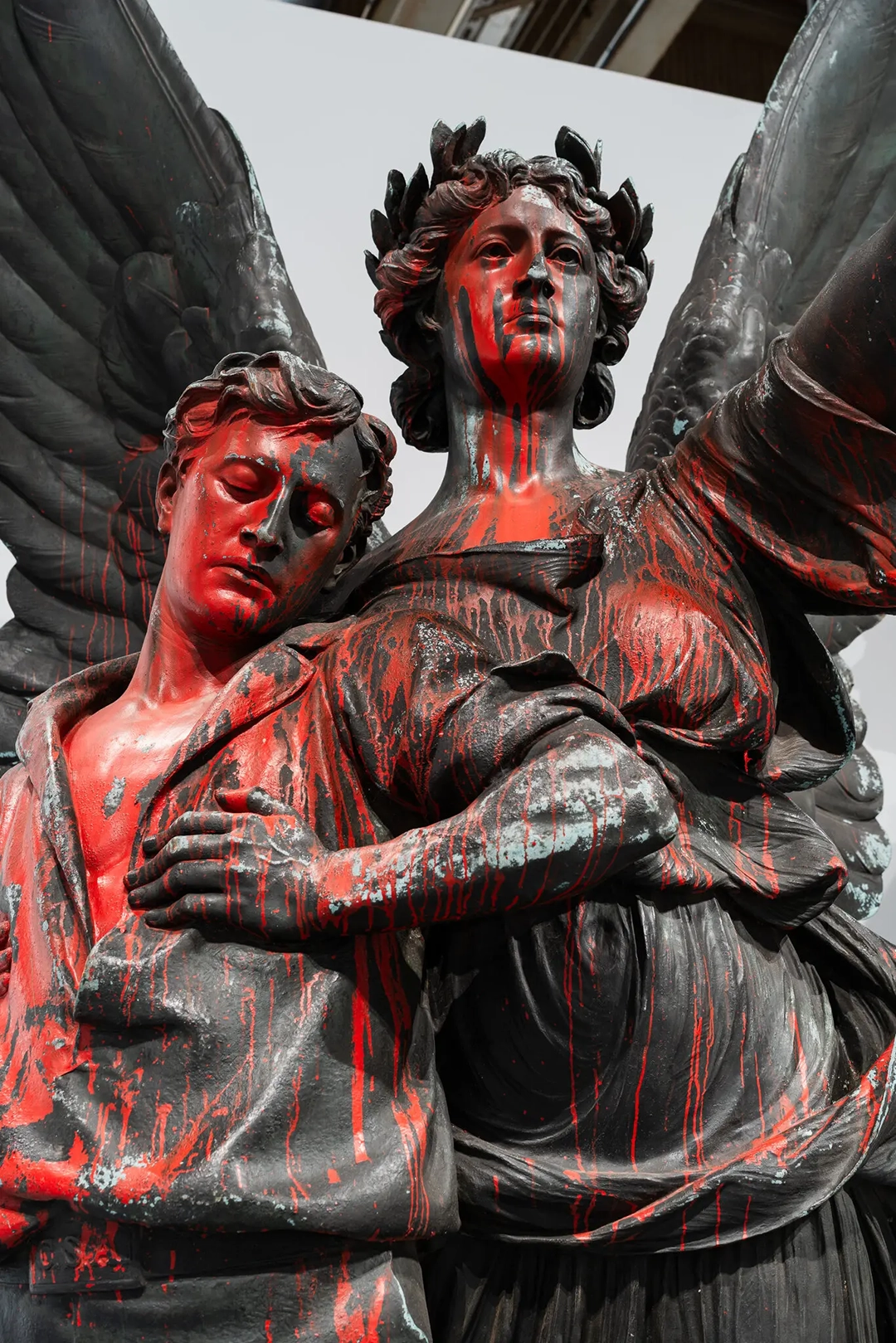
Frederick Wellington Ruckstull created this monument on commission from the Maryland Daughters of the Confederacy. Protesters splashed it with red paint in 2017. Aleksey Kondratyev for The New York Times.
I ended the previous piece speaking about what has happened to my country after dismantling practically every vestige of its republican past. The revolutionaries abolished even the privately owned shoe-repair shops. They changed names as charming as “La Cenicienta” to Unit 256 for General Shoe Repair. They stripped them of every sign of identity, every trace of belonging. Where there had once been a prudent owner and two, three, or four cobblers, the space was taken over by a director and a deputy director, an administrator, a representative of the Communist Party, two accountants, and a single cobbler stitching away, dazed by the number of people watching him so attentively.
I want to believe—and I base this on empirical evidence—that my world, the world of graphic design (and I’m speaking of the great majority of designers and allied professionals), would not today allow enraged demonstrators—and with good reason—to destroy or burn the hundreds of political posters produced over the last thirty or forty years. And almost all of them were posters that praised a failed, predatory system, laundered deception, and tried to manipulate the masses from every angle. That is the memory of the Cuban poster. It is what it is, it’s what exists, and it is what we must study to understand what it has been—its evolution and its present.
The above, of course, has nothing to do with Confederate statues. But every social group has its phobias and its manias. And a priori, none stands above the others.
I have no problem removing from sight the signs that no longer represent almost anyone and speak to us of a painful past, hard to overcome—whose mere mention unsettles, inflames, and makes the breath grow dense and deep. No problem at all.
There are more civilized alternatives to destruction, to what Rome called damnatio memoriae—the erasure of defeated emperors, as if they had never existed. Alternatives that propose new discourses and a less violent reassessment which, with luck, will not rekindle old hatreds.

Kara Walker’s sculpture “Unmanned Drone,” created from rearranged parts of a decommissioned equestrian statue of the Confederate general Stonewall Jackson, is the centerpiece of “Monuments,” opening Oct. 23 in Los Angeles. Aleksey Kondratyev for The New York Times
Monuments
This is what the exhibition Monuments proposes, to cite just one example—divided between the Geffen Contemporary at MOCA and The Brick, in Los Angeles. An uncommon exercise: a look at the past without erasing it or glorifying it. Within its spaces, the physical remains of Confederate monuments removed in recent years enter into dialogue with works by contemporary artists, most of them African American. Without aspiring to fully resolve the tension between them, it seeks the point at which historical memory and present sensibilities attain a state of balance or repose, however precarious.
The debate that gave rise to it springs from a social and symbolic fracture. On one side are those who defend Confederate sculptures as heritage—insisting on their historical value while ignoring their ideological charge—and on the other, those who take them as relics of racism, incompatible with a modern society that seeks justice and inclusion. Both arguments contain valid reasons and excesses. Preservation can imply a sly complicity; elimination, a tabula rasa on which history may be reformulated at will through opportunistic narratives.
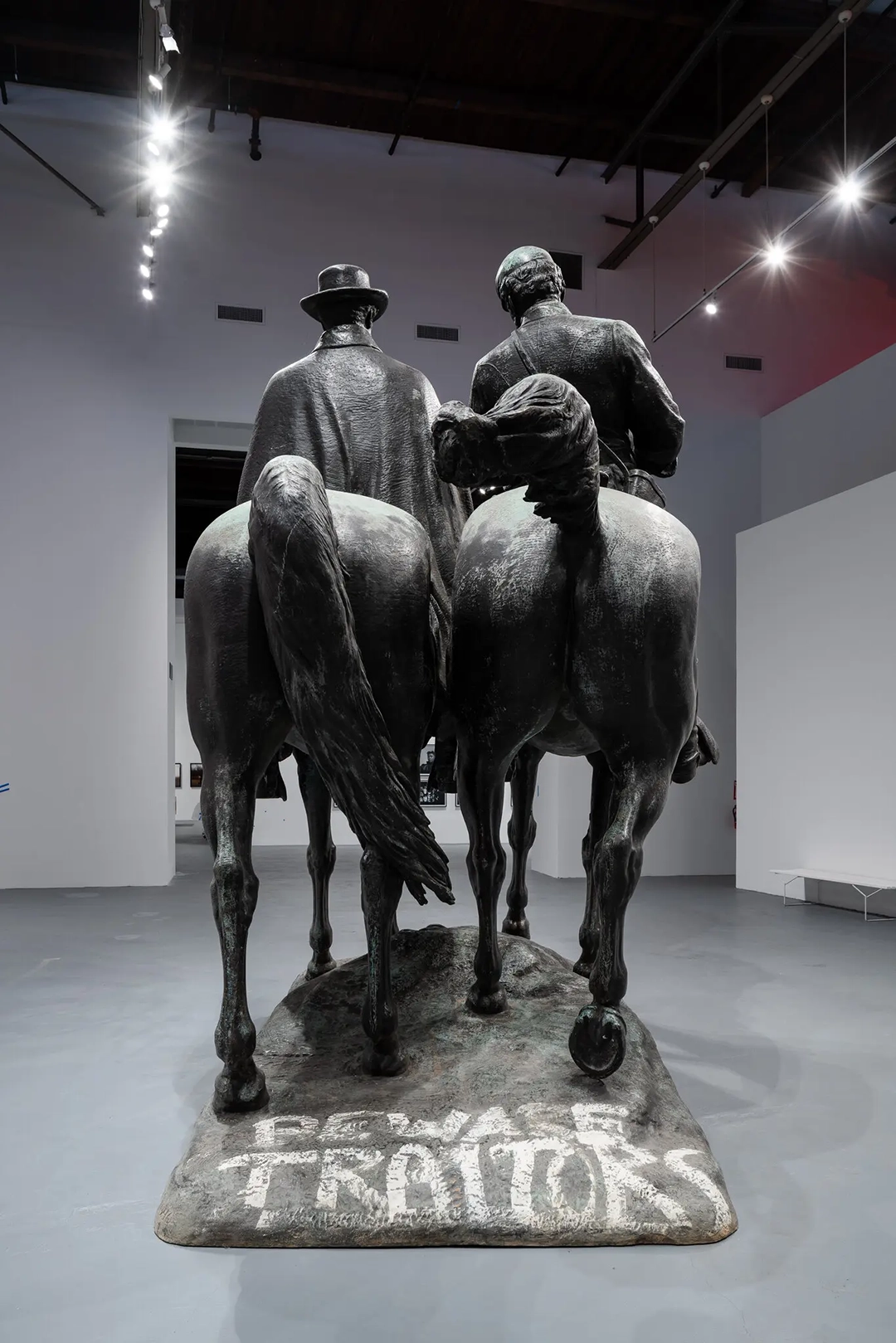
Laura Gardin Fraser’s dual equestrian Robert E. Lee-Stonewall Jackson Monument, with a recent graffito, at the Geffen Contemporary, MOCA. Aleksey Kondratyev for The New York Times
Faced with those irreducible positions, curators Hamza Walker and Bennett Simpson, together with artist Kara Walker, propose something in between: submitting the fallen monuments to a rather unprecedented gaze. The mere act of removing them from plazas and avenues and relocating them in a gallery—without pedestals, without inscriptions—deprives them of much of their authority. Like the cold corpse of an enemy: we see that, beyond being odious, it had moles, one leg longer than the other, hair in its nose. In purely material terms, it is not entirely alien. At their new height, these representations go little further than being cultural matter to be reinterpreted, analyzed, even challenged.
Art tends to be what it has always been—at least in part—a cultural mediator. Without presuming to judge or absolve, it makes room for looking and slows the moral verdict. The Confederate sculptures, stripped of their heroic aura, share the ground with works that interrogate their matrices of meaning. Some are openly critical; others, introspective. Their coexistence produces a controlled friction—a conversation that neither rejection nor veneration would have allowed.
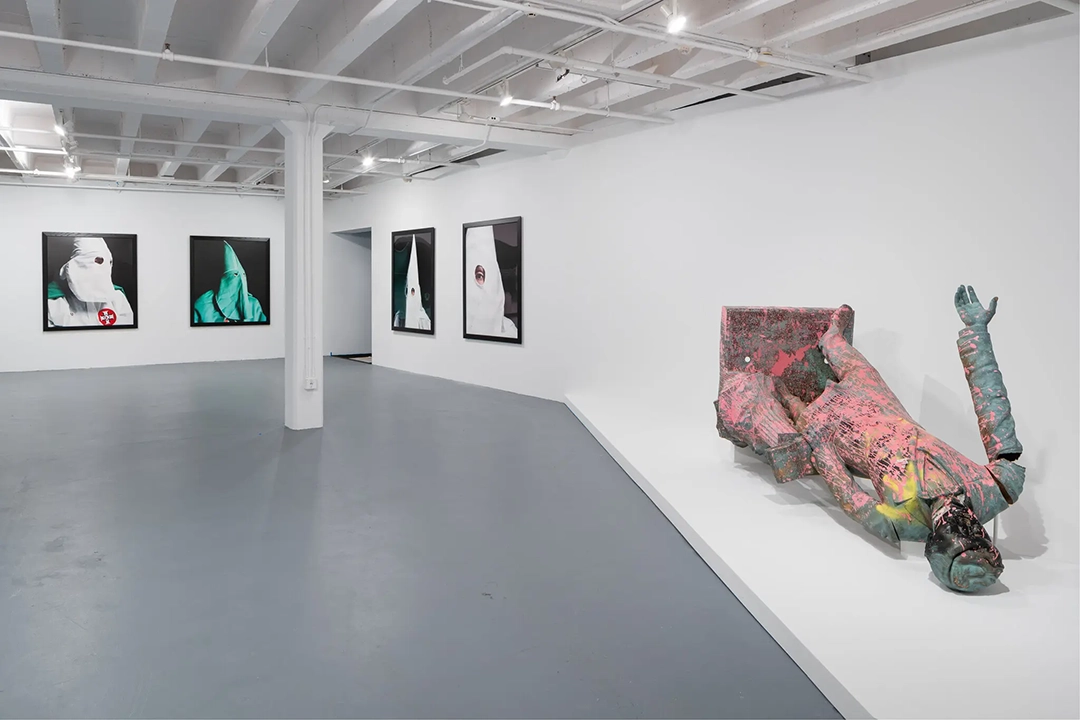
Andres Serrano’s photographic portraits of Ku Klux Klan members, from 1990, confront a toppled 1907 Neoclassical statue of Jefferson Davis at the Geffen Contemporary at MOCA. Aleksey Kondratyev for The New York Times
Visitors are not summoned to choose a side, but to sustain the contradiction. The opposed sensibilities—the one that demands justice and the one that fears the erasure of the past—find themselves before a kind of provisional truce. The museum, as a neutral space, acts as a laboratory where history can be disassembled and examined without the pressure it must bear in the street. Because the physical distances are so slight, they become emotional.
Kara Walker illustrates this perfectly. Her intervention on the statue of Stonewall Jackson—fragmented, reassembled, and turned into a centaur—neither destroys nor restores the original; it transforms it into something unforeseen. By dramatically altering its structure, she reveals its internal architecture, its joints, its dependence on the constructive system that sustains it. In exposing its weaknesses, she also reveals—symbolically—the instability of the system the work sought to glorify. She leaves us with the resource of understanding before reacting.
The exhibition also brings together works in video, photography, and sculpture. Stan Douglas, Julie Dash, and Nona Faustine examine the United States’ racial legacy through intimacy, collective memory, or mourning. Their interventions do not replace the monuments. They move forward with them toward a new interpretive system in which the monuments are confronted by intellect—placed within a broader, less exalted narrative about power and its representation.
The tension between conflicting memories is one of the axes the exhibition tests. I do not think it aims to lay out positions on the Civil War or on historical revisionism. I believe it is a curatorial move that, from a certain vantage, mirrors how traditional psychology would try to mediate between the extreme reactions of those involved in a conflict. It would attempt cognitive desensitization—that is, to associate the symbol with a neutral context, almost an absurd one, such as the observational space of a gallery. Without a doubt, this will reduce the anxious automatic response and, in turn, make room for a cognitive restructuring in which the agitated replace their distorted thoughts—because to hate a bronze statue is, in some sense, exactly that—with perceptions more realistic and proportionate. It might work if we approach this show as the pursuit of healing through cognitive reconfiguration.

At MOCA, a contemporary artwork by Martin Puryear, left, alongside the decommissioned Confederate Soldiers and Sailors Monument, 1903. Our critic writes that the group show “faces down past and present hatreds with startling confidence.” Aleksey Kondratyev for The New York Times.
It does not seek to reconcile the extremes so much as to contain them within the same frame: to treat art as a diplomatic platform, a language capable of sustaining tension without the need to resolve it. Nor is it about substituting the old figures with more acceptable ones, but about understanding the conditions that made them possible. If history cannot be rewritten, perhaps it can be reframed. This exhibition invites us to do so calmly—where the past, the present, and their wounds can be viewed with the serenity that only art, at times, allows.





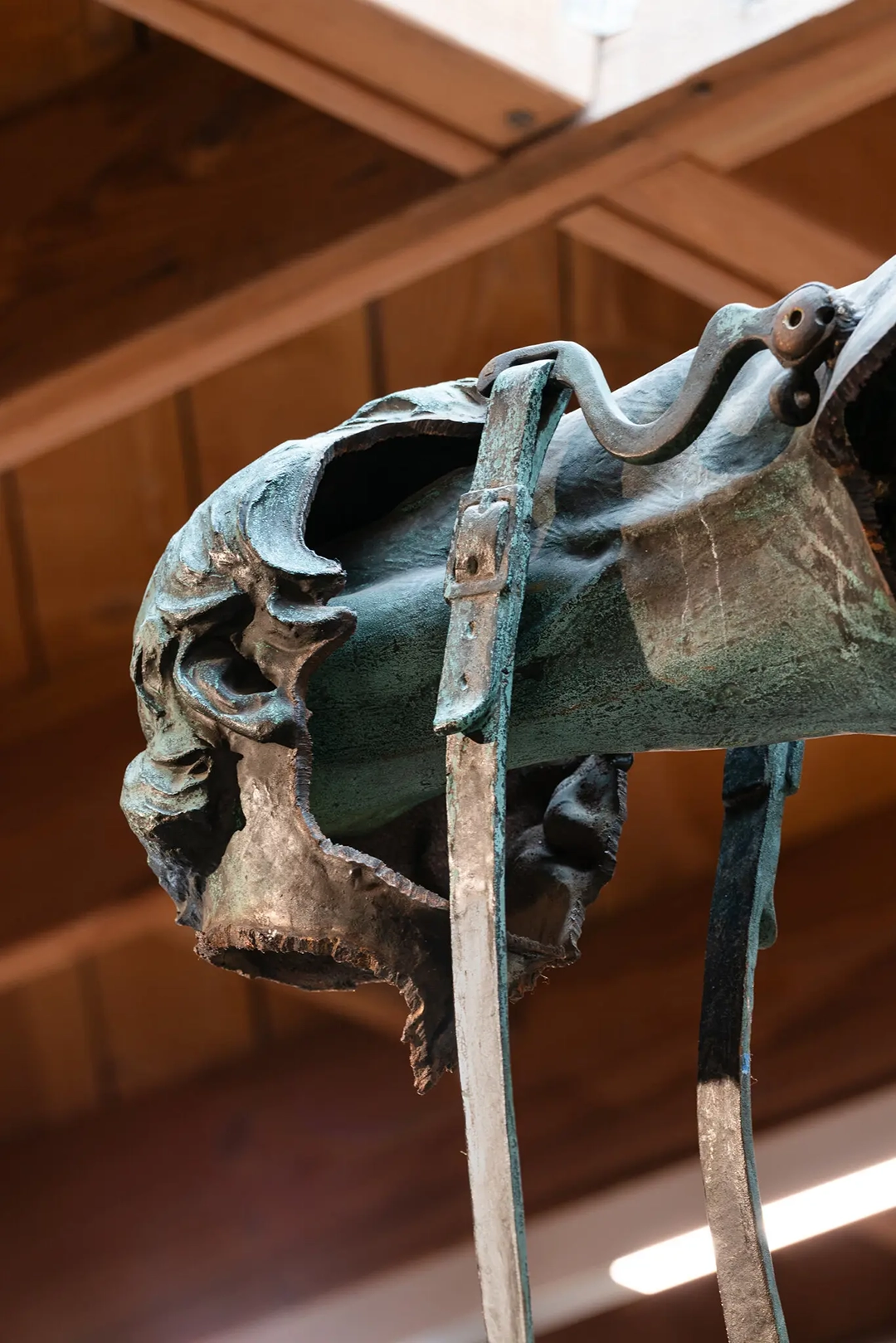
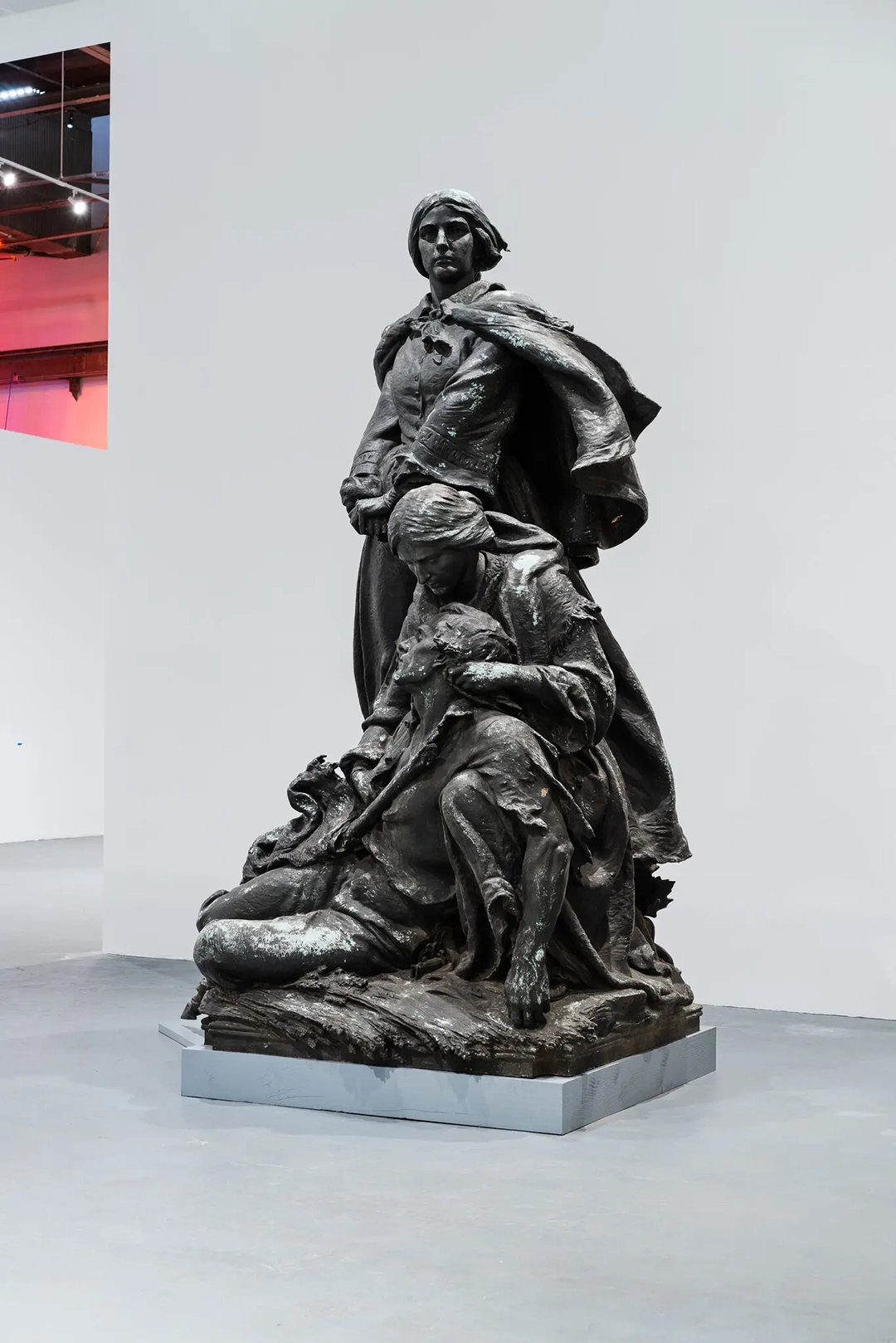




Comments powered by Talkyard.